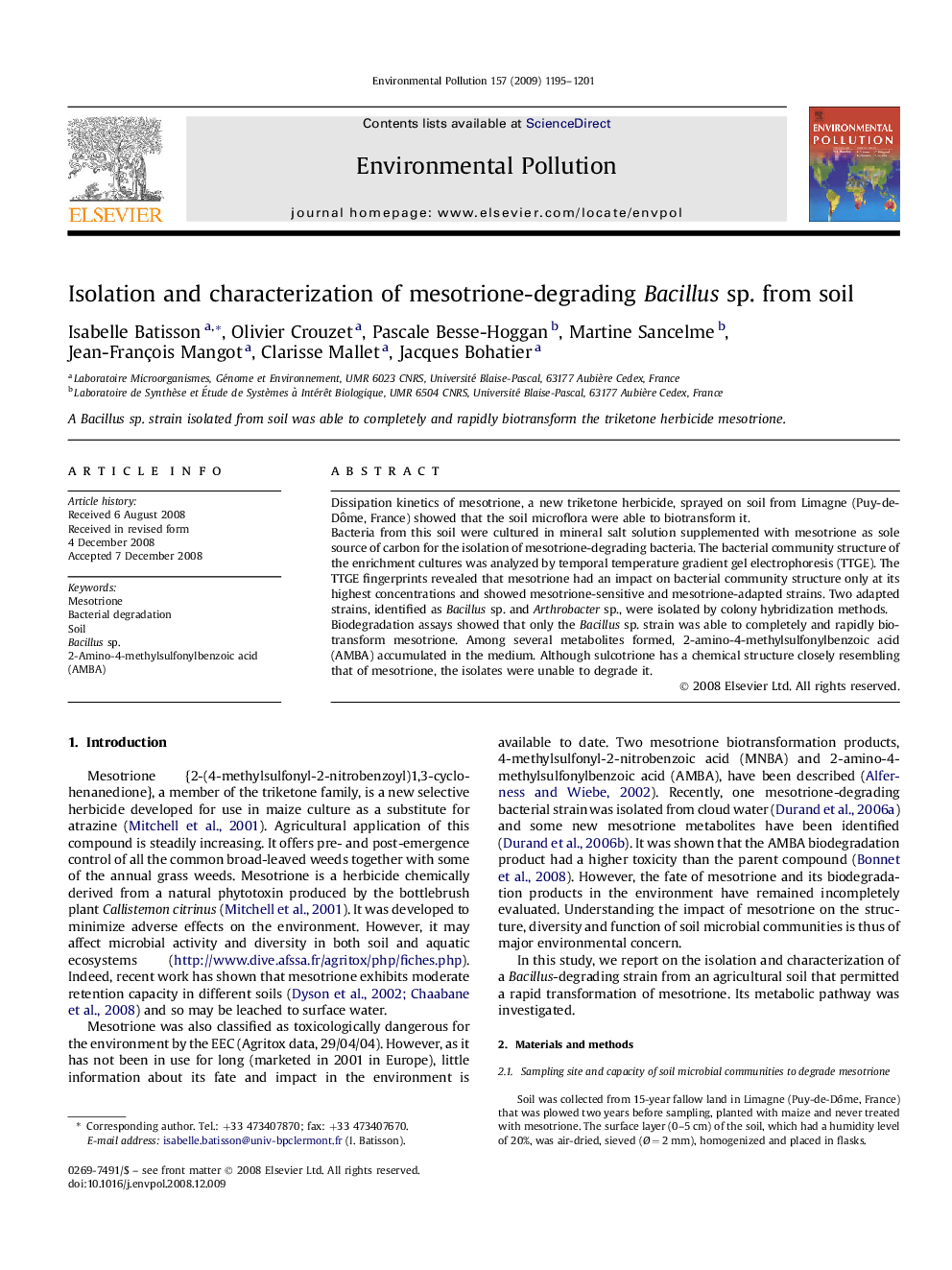| Article ID | Journal | Published Year | Pages | File Type |
|---|---|---|---|---|
| 4426525 | Environmental Pollution | 2009 | 7 Pages |
Dissipation kinetics of mesotrione, a new triketone herbicide, sprayed on soil from Limagne (Puy-de-Dôme, France) showed that the soil microflora were able to biotransform it.Bacteria from this soil were cultured in mineral salt solution supplemented with mesotrione as sole source of carbon for the isolation of mesotrione-degrading bacteria. The bacterial community structure of the enrichment cultures was analyzed by temporal temperature gradient gel electrophoresis (TTGE). The TTGE fingerprints revealed that mesotrione had an impact on bacterial community structure only at its highest concentrations and showed mesotrione-sensitive and mesotrione-adapted strains. Two adapted strains, identified as Bacillus sp. and Arthrobacter sp., were isolated by colony hybridization methods.Biodegradation assays showed that only the Bacillus sp. strain was able to completely and rapidly biotransform mesotrione. Among several metabolites formed, 2-amino-4-methylsulfonylbenzoic acid (AMBA) accumulated in the medium. Although sulcotrione has a chemical structure closely resembling that of mesotrione, the isolates were unable to degrade it.
